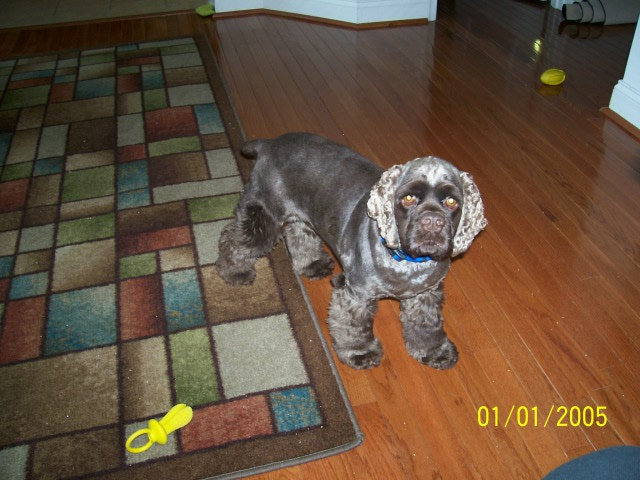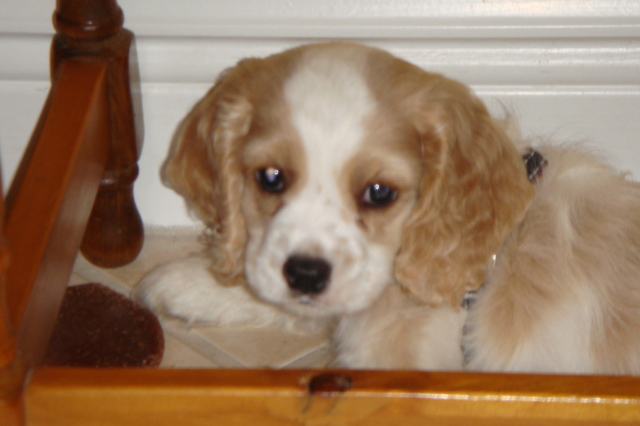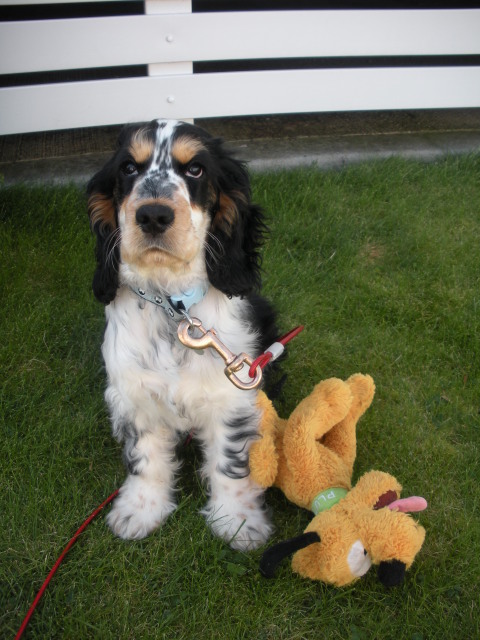QuestionHello:
Starting this past early summer I noticed a sore on my black 3-1/2 year old Cocker. I thought it was a tick and start to try to remove it. Doing this evidently caused pain as the dog yelled and I immediately stopped. Over the next few weeks I saw more and more of these spots popping up on his neck and back and took him to his vet.
They diagnosed him as having "hot spots" and prescribed an expensive shampoo (had to leave it on for 10 minutes) and a cream to put on wet fur after his bath. I was to bathe him twice a week, which I did. While the spots did clear up they didn't go completely away. I finished the shampoo and have since purchased oatmeal shampoo at a local pet store which seemed to help with the sores a little but not completely. Also, his vet told me to give him 1-1/2 tabs of Benedryl for the itching as these spots itch and hurt at the same time.
It has been about 4 months and he is only getting worse now. He cannot tolerate antibiotics - he gets severe diarrhea and vomiting - so his vet is reluctant to put him on anything like that.
I have not changed his food at all this summer but we have had extensive construction near the backyard that produced constant diesel exhaust, dust from blasting and plenty of dirt. I have no idea if this caused his problem or is contributing to my inability to relieve him of this problem.
I am about to change vets as I cannot stand seeing him uncomfortable. Please advise as to what I can do to help my beloved pet. He eats 3/4 cup of Royal Canin #25 in the morning and has about 1/2-3/4 pound of either fried or boiled hamburg at night (sometimes mixed with rice if his stomach is upset). He has always had a "weak stomach" since I first got him at 8 weeks of age.
Thank you in advance for any input you can give.
AnswerFirst of all - stop feeding him fried meat. And if he has tummy issues, I'd add some plain boiled chicken (no skin-no bones). By only giving him meat at dinner you're creating a very unbalanced diet. How is his weight?
The oatmeal shampoo won't help much. Buy some Nizoral (this is a favorite with vet Dermatologists). Most drugstores/supermarkets carry it. Shake bottle well - lather him up and leave on for 10 minutes. Rinse a LOT. When you think you've rinsed enough (with only warm water..never hot), do it 5 more times. If you can do this every second day for a week and then taper to every 3rd day it'll speed things up.
As for the antibiotics - do you remember which one was prescribed? A dog may have a reaction to one antibiotic, but usually that is solved by changing to another. If you do consult another vet, call the old vets' office and make note of any medications he's been given.
Your vet probably gave you Resi Keto-Chlor to massage in after his bath. You can order this online at EntirelyPets.com. It's an excellent product to kill bacteria. You can also order some Malaseb Shampoo there, which is probably what your vet gave you.
If these are hot spots the goal is to keep them clean & dry. Usually hot spots are red and the dog will lose fur in that area. I do think it's a good idea to consult another vet. In the meantime, do a little "spot cleaning" with half water/half plain white vinegar.
I'm quite puzzled about this since this doesn't sound like a hot spot. I'm also not crazy about Royal Canin and would try switching him temporarily to California Natural which is designed for dogs who "might" have food intolerance and has very limited ingredients. Try the Lamb & rice.
If you switch his food - do it very slowly by adding a bit more of the new food every day.
I'd also feed him more dog food and add some boiled chicken at each meal. What you're doing now is terribly unbalanced and he's not getting enough complete nutrients. And dogs with sensitive tummys often do better being fed more small meals rather than two larger ones. So I'd try feeding him 3 or 4 times a day to see if that helps.
If you go to a new vet, here's what should happen:
1. Full exam and history taken
2. Skin looked at under a Wood's light which will indicate the extent of the infection.
3. Vet should take skin cells by either a scrape or using a piece of tape. (This is then analyzed to determine if this is bacteria or yeast - takes two minutes to do that).
4. Appropriate antibiotic for a MONTH.
5. Vet should give topical instruction.
I doubt the construction issue is causing this, but it's certainly not good for him so keep him away from the backyard as much as possible.
Delores

 cocker allergies
Question
Cinnamon Cinnamon
My 3 year old c
cocker allergies
Question
Cinnamon Cinnamon
My 3 year old c
 Differences between breeds
QuestionQUESTION: My puppy is 12 wks.old and weights ar
Differences between breeds
QuestionQUESTION: My puppy is 12 wks.old and weights ar
 Nervous/depressed cocker spaniel
QuestionSophie
QUESTION: Hi! Sorry if this is a
Nervous/depressed cocker spaniel
QuestionSophie
QUESTION: Hi! Sorry if this is a
 PROBLEM COCKER SPANIEL
Question
JAXON
Jaxon is a year old male neutered
PROBLEM COCKER SPANIEL
Question
JAXON
Jaxon is a year old male neutered
 Escalating health issues
QuestionTeddy
QUESTION: First of, thank you much
Escalating health issues
QuestionTeddy
QUESTION: First of, thank you much